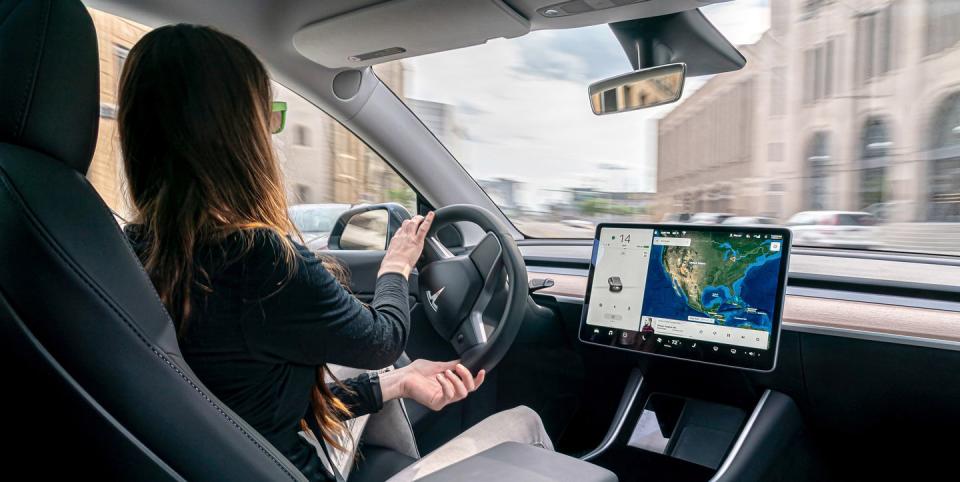EVs Explained: Consumption Versus Efficiency

In vehicles with combustion engines, the concepts of efficiency and consumption are one in the same. Not so with EVs.
Not only is energy lost in the charging process, but energy is used when the vehicle is just sitting waiting to be used.
An EV's efficiency rating is typically expressed in MPGe, or miles per gallon equivalent. That accounts for all the energy expended by the vehicle.
Quite reasonably, EV owners tend to focus on the energy their cars use to move—information that's almost always somewhere in the operating data accessed via the infotainment system.
Whether it shows up there as watt-hours per mile (Wh/mi), as Tesla prefers, or miles per kWh (employed by many other EVs), drivers want to know how much energy their cars consumed over how many miles—and what that means for their next trip.
But the energy consumption of the car's powertrain, climate control, and other subsystems while driving is just one part of an EV’s overall efficiency. In a vehicle with a combustion engine, those two concepts—efficiency and consumption—are one in the same. In EVs, it's more complicated. Energy not only gets lost during the charging process, but also when the car's sitting parked and going nowhere at all.
The owner's manual for the Model 3 says to expect about a 1 percent drop in the battery's state of charge for every day it sits unused. But we've seen that figure jump as high as 12 percent in a single day for our long-term Model 3 during a frigid midwest winter when the temperature dropped to -10 degrees. Pre-conditioning the cabin before driving off—warming or cooling the cabin using electricity either from the battery, if unplugged, or from the wall—is another use of energy not accounted for in the consumption figure.
An EV's efficiency rating, typically expressed in MPGe, or miles per gallon equivalent, accounts for all the energy expended by the vehicle. It’s a metric created to compare the energy efficiency of EVs to that of gas-powered vehicles by showing how many miles they can travel on the energy contained in 1 gallon of gasoline (the EPA defines that as 33.7 kilowatt-hours, but different fuel blends can have slight variations).
Data from our long-term 2019 Tesla Model 3 Long Range Dual Motor test car highlights the difference between consumption and efficiency in EVs.
The Model 3 consumed the most energy during January 2021, a cold month when temperatures averaged 30 degrees F. It used 358 watt-hours to cover each mile. That works out to 2.8 miles per kWh. But in August 2020, when the temperature averaged 75 degrees F (close to the battery’s happy place, climate-wise), the car used dramatically less energy: 256 Wh/mi, or 3.9 mi/kWh.
Not helping in the distinction between consumption and efficiency is that it's possible to convert between Wh/mi or mi/kWh and MPGe, and thus giving an efficiency figure solely for energy used while driving.
For example: the Model 3’s higher winter consumption of 358 Wh/mi translates to 94 MPGe, while its lower June consumption of 256 Wh/mi comes in at a higher 132 MPGe.
But those weren’t the overall efficiency figures we measured for our Model 3. Instead, the January figure was 74 MPGe (21 percent lower), while the June figure was 107 MPGe (19 percent lower).
So roughly one-fifth of the car’s total energy use was spent when the car was at a standstill.
Although that may sound wasteful, overall these numbers are far better than gasoline- or diesel-powered vehicles. Those waste so much of the energy contained in their fuel (65 to 75 percent for non-hybrid gasoline cars, 65 to 70 percent for diesels) that other factors like cabin heating and cooling are pretty much lost in the wash.
Across the entire 2021 model year fleet, EVs have an average EPA combined efficiency of 99 MPGe while those powered solely by a combustion engine have an average of 23 mpg.
You Might Also Like

 Yahoo Autos
Yahoo Autos 